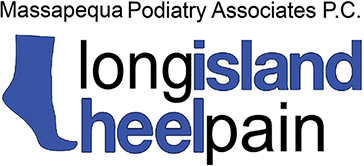Believe it or not, but there are plenty of places you can walk in Manhattan and, you know, actually enjoy the experience.
We know downtown has a reputation for being a very hurried sort of walking environment. Keep right. Walk in sync. Let the people who obviously have places to be by. Maybe stop at the red light on the pedestrian crossing if traffic is coming. (Seriously, though; don’t be foolish about that one.)
But there are still havens where you are freer to walk at your own pace. Heck, you might even be able to stroll.
Central Park is the go-to, of course with its wide walking berths and sprawling lawns. However, don’t neglect Hudson River Park for some waterside views, or take your sights upward and walk the High Line on the West Side.
Whether your ambling is strictly business or more for pleasure, none of it will be pleasant if your feet are hurting the whole way!
If you’re planning on walking downtown, you should be prepared for a whole day. The choices you make can have a significant impact on how comfortable your feet feel at the end of the day—and the morning after.

Best Shoes For The City
Shoes will naturally have a huge impact on foot and heel pain risks as you hit the sidewalks.
We likely don’t have to tell you that a day spent in high heels is going to have consequences by the end of the day. The raised heel forces weight forward against the front of the foot, which can lead to forefoot pain and even the development of a painful neuroma (a swelling of nerve tissue) against the toes.
But let’s not pile all the shame on high heels, however. Any form of ill-fitting shoe is capable of causing plenty of problems. A shoe that fits too tightly is likely to cram the toes together, increasing the risks of ingrown toenail, corns, and calluses; but a shoe that fits too loosely is probably going to make the foot slide within the shoe, thereby increasing the risks of blisters and foot pain.
A good walking shoe, in general, should have:
- A round, roomy toe box that allows the toes to move freely.
- A cushiony insole that absorbs shock and supports your arch. Gel, air, and foam are all good materials to this effect.
- A heel collar that cushions and supports the ankle without sliding.
- A snug, side-to-side fit—but not one that is tight.
A shoe shouldn’t have to be “broken in” to fit properly, but you should definitely spend some time in new shoes to make sure they’re comfortable before you go out for any extended use in them.
It’s a terrible feeling to be partway through your day only to realize your brand new pair of shoes are not as comfortable for your feet as you had expected!
Are Your Arches Being Accommodated?
If you have high arches or flat feet, taking measures to provide proper support for them will go a long way toward preventing pain from conditions such as plantar fasciitis or Achilles tendinitis. Without that support, the way you walk and the way weight can be unevenly distributed across your feet may lead to excess stress upon certain ligaments, tendons, or other soft tissues.
The first step in seeking good arch support goes back to your shoes. If you have low arches or flat feet, you may be more likely to have your feet roll inward as you walk. A walking shoe that is built for stability and motion control is likely to help you in this case.
If your arches are high, on the other hand, they may not absorb shock as well. This places excess strain on joints and muscles with every impact your feet make against the ground. Cushioning is an important element here, to add shock absorption where needed.
If shoe choices are not having enough of a desired effect in reducing discomfort and strain, custom orthotic inserts are a potential next step. These inserts are prescribed specifically to the shape of a patient’s foot, providing the exact support and cushioning needed.
Give Yourself Some Aftercare
After a long day out walking, taking care of your feet as soon as possible will help you prepare for the next day.
Get your shoes and socks off as soon as you get home (unless you have any complications that make it safer for you to keep your shoes on). Let your feet get some air and dry off any perspiration from the day. Make sure the same happens with your shoes, too. In fact, if you have another pair of shoes you can wear the next day, opt for those instead and give your previous day’s shoes at least 24 hours to fully dry.
If your feet are sore, stretch your muscles a bit with some heel raises and toe splays, finishing off with pushing your feet against a wall for a long stretching moment.
Elevating your feet will also help reduce discomfort and swelling. A stack of pillows is a good, comfortable tool for doing so. You might also consider giving yourself a nice massage—either the old-fashioned way or by rolling a tennis ball beneath your foot.

Enjoy Your Walking without Pain
Sometimes, despite your best efforts, foot and ankle pain can still plague your movements. If this sounds like you, don’t hold off treatment any longer!
Dr. Corey Fox, Dr. Justin LoBello, and the staff at Massapequa Podiatry Associates have the tools and expertise to get to the root of your problem and provide the care that will work best for your specific needs—whether you have places to go or you like to stop and smell the roses.


